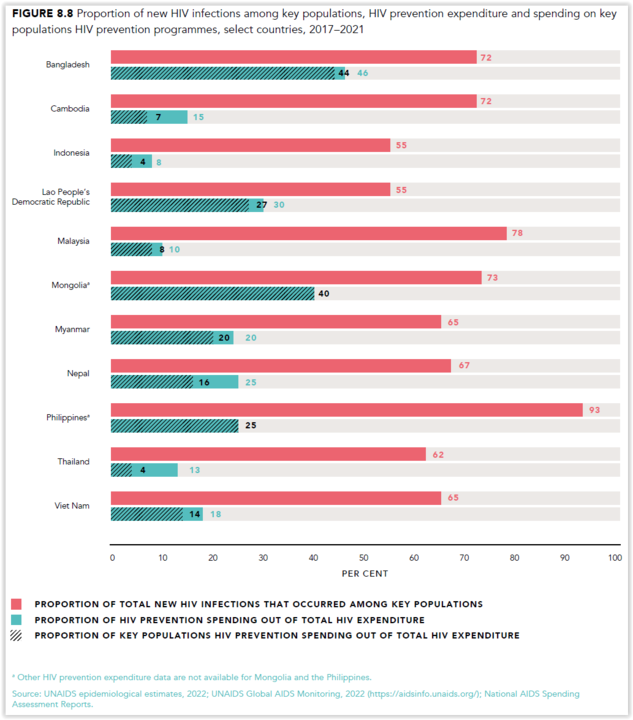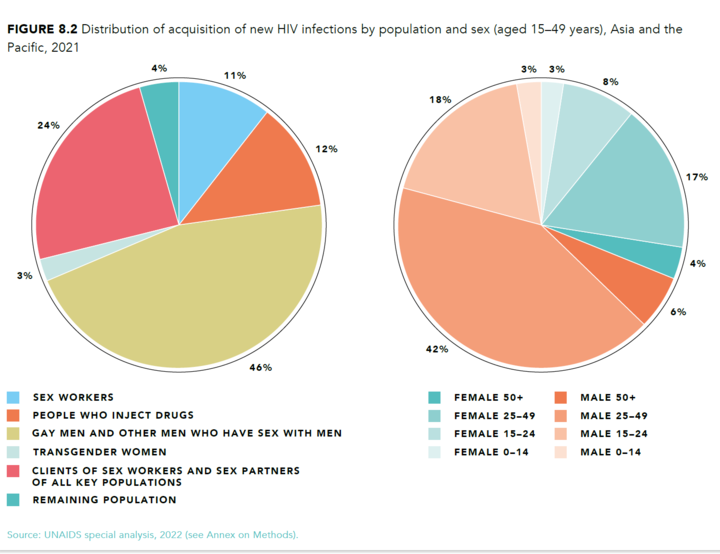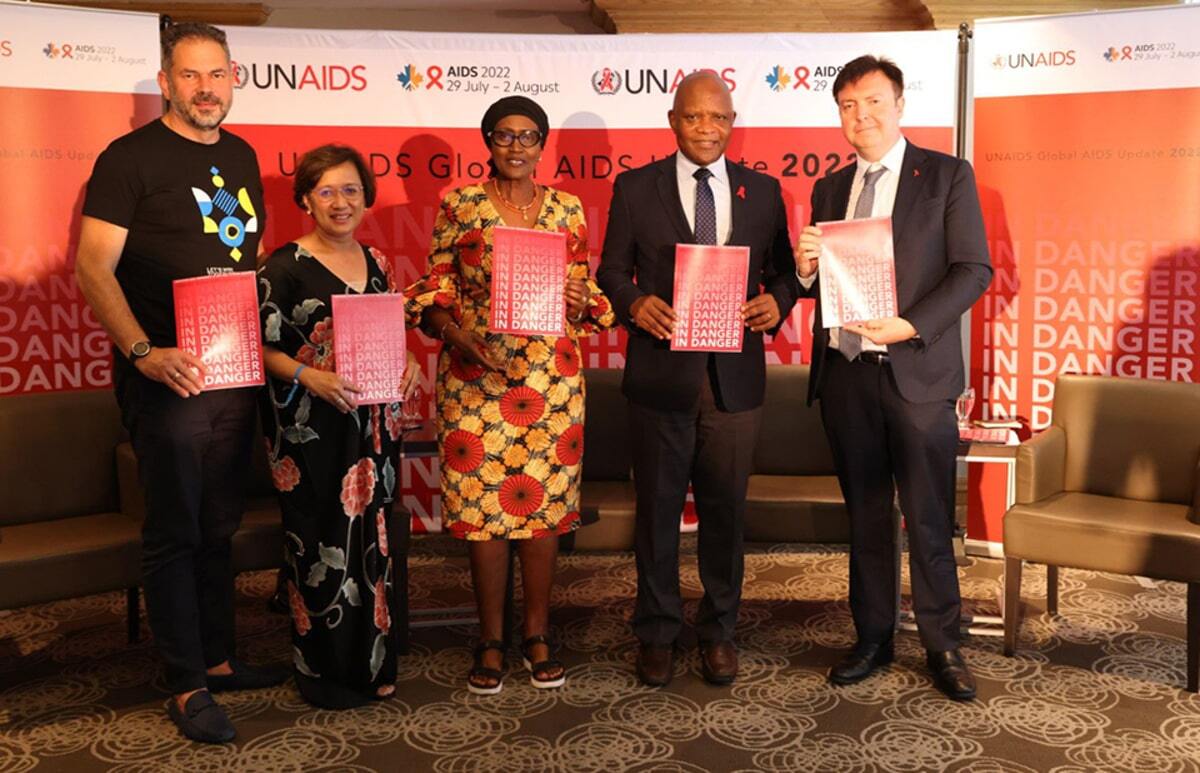MONTREAL, July 27 – Progress against AIDS stalled during the last two years of the Covid-19 pandemic, with 1.5 million new HIV infections recorded last year, three times the global target, a United Nations agency reported.
The UNAIDS Global AIDS Update 2022 report titled “In Danger” revealed that the number of new HIV infections dropped only 3.6 per cent between 2020 and 2021 during pandemic disruptions, the smallest annual decline since 2016.
One person died from AIDS every minute on average last year that saw 650,000 AIDS deaths, despite effective HIV treatment and tools to prevent, detect, and treat opportunistic infections, or illnesses that occur more frequently, and are more severe in people with HIV.
A young woman or adolescent girl contracted HIV every two minutes in 2021. UNAIDS attributed the gendered HIV impact, especially for young African women and girls, to the disruption of key HIV treatment and prevention services, millions of girls out of school, and spikes in teenage pregnancies and gender-based violence during the coronavirus pandemic.
Annual HIV infections have been increasing over the past decade in eastern Europe and central Asia, the Middle East and North Africa, as well as Latin America. UNAIDS data also shows a rise in new HIV infections in Asia and the Pacific – the world’s most populous region – where they had previously been falling over the past 10 years.
Rapid progress against HIV/AIDS from previous years in eastern and southern Africa significantly slowed in 2021. Although notable declines in new HIV infections were recorded in western and central Africa and in the Caribbean, these regions are facing reduced resources for their HIV response.
“The new data revealed in this report are frightening: progress has been faltering, resources have been shrinking, and inequalities have been widening,” UNAIDS executive director Winnie Byanyima said at the launch of UNAIDS’ new “In Danger” report at Montreal, Canada, here today, ahead of AIDS 2022, the 24th International AIDS Conference organised by the International AIDS Society (IAS).
“Insufficient investment and action are putting all of us in danger: we face millions of AIDS-related deaths and millions of new HIV infections if we continue on our current trajectory.
“Together, world leaders can end AIDS by 2030 as promised, but we need to be frank: that promise and the AIDS response are in danger.”
Dr Anthony Fauci, director of the National Institute of Allergy and Infectious Diseases at the United States’ National Institutes of Health, expressed grave concern about the slowing progress of the global HIV response, when asked if the setbacks were temporary in nature because of the Covid-19 pandemic.
“The reason why I say that is when you have a disease that we’ve been addressing as a community for now over 40 years, even that alone is a tough sell to keep the enthusiasm up, particularly when you have interventions that are highly effective,” he told the panel in a virtual call, citing HIV medications despite the lack of a vaccine for the infectious disease.
He called for such interventions to be implemented equitably throughout the world.
“There’s enough problems getting that when you have a 40-year-old disease. When you intervene in that, a Covid-19 pandemic, the likes of which we have not seen for over 100 years, now with monkeypox, people are exhausted with epidemics and pandemics.
“So I think, our challenge is we have to fight twice as hard to get HIV back on the radar screen where it belongs, because it was here before Covid and monkeypox, and it will be here after Covid and monkeypox.”
Malaysia, Philippines Among Countries With Rising HIV Epidemics Among ‘Key Populations’

According to the executive summary of UNAIDS’ report, HIV infections have now increased since 2015 in 38 countries, including Malaysia and the Philippines, the only two Asean nations listed.
The report cited Malaysia and the Philippines as being among the countries with rising HIV epidemics among “key populations”, defined by UNAIDS as gay men and other men who have sex with men (MSM), sex workers, transgender people, people who inject drugs, and prisoners and other incarcerated people as the five main key population groups that are particularly vulnerable to HIV and frequently lack adequate access to services.
“Increases in infections in these regions are alarming,” said the UNAIDS report.
From 2017 to 2021, Malaysia recorded the second highest proportion of new HIV infections among key populations in a sample of 11 countries at 78 per cent, behind the Philippines’ 93 per cent.
In that period, Malaysia also recorded the second lowest proportion of HIV prevention spending out of total HIV expenditure in the sample of mostly Asean nations at 10 per cent, exceeding Indonesia’s 8 per cent. Malaysia’s proportion of key populations HIV prevention spending comprised 8 per cent of total HIV expenditure.
Malaysia’s laws and policies scorecard in Asia and the Pacific for 2022 was negative across nearly all punitive laws measured, with criminalisation of transgender people, sex work, and possession of small amounts of drugs. Same-sex sexual acts in private are punishable in Malaysia with a jail term, though not with the death penalty.
Malaysia also has laws criminalising the transmission of or non-disclosure of or exposure to HIV; laws or policies restricting the entry, stay and residence of people living with HIV; requires parental consent for adolescents to access HIV testing; and mandatory HIV testing for marriage, work or residence permits, or for certain groups.
Malaysia doesn’t have protective legislations either, such as constitutional or other non-discrimination provisions for sexual orientation, gender identity, people who inject drugs, or sex work.

According to UNAIDS, although key populations account for less than 5 per cent of the global population, they and their sexual partners comprised 70 per cent of new HIV infections in 2021.
IAS president Dr Adeeba Kamarulzaman, who is also an infectious disease physician at Universiti Malaya, said the 70 per cent figure showed that the most marginalised communities are also the hardest hit by HIV.
“We urgently need to make resources available, close research gaps, and eliminate the stigma that still pervades thinking,” she told the panel.
“Most crucially, we must ensure that scientists, policymakers and activists come together to achieve progress. It’s time to re-engage and follow the science.”
In Asia and the Pacific, the key populations’ proportion of new HIV infections was much higher than the global rate, with such groups comprising a whopping 96 per cent of new HIV infections last year. Gay men and MSM held the biggest share of new HIV infections in the region at 46 per cent, followed by clients of sex workers and sex partners of all key populations at 24 per cent.
People who inject drugs have 35 times greater risk of acquiring HIV than adults who do not inject drugs. Female sex workers are 30 times more likely to contract HIV than adult women aged 15 to 49 in the general population.
Gay men and MSM have 28 times greater risk of acquiring HIV than adult men aged 15 to 49 in the general population. Transwomen are 14 times more likely to contract HIV than adult women aged 15 to 49 in the general population.








